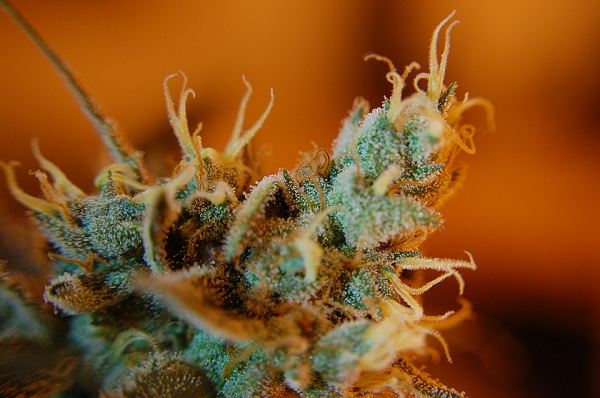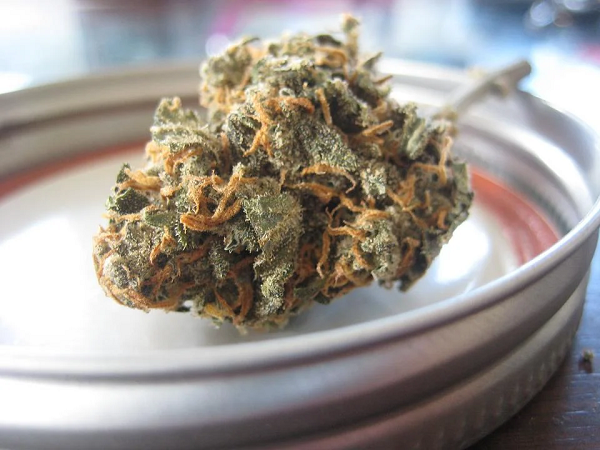Have you ever noticed the tiny hair-like structures on the surface of the cannabis flowers? Those are known as trichomes. “Trichome” comes from a Greek word that means “hair”. Scientifically speaking, trichomes are the appendages found on the surface of cannabis buds, flowers, and leaves. The trichomes have a translucent, crystal-like appearance and hold high concentrations of terpenes and cannabinoids.
Cannabis harvesters pay particular attention to trichome development as it will determine the potency and psychotropic efficacy of the plant. Though trichomes appear naturally on healthy cannabis plants, a few tips and tricks can help improve their growth. Sounds intriguing, right? This article will explore three expert-recommended tricks to accelerate Trichome Production and also increase their potency levels.
How To Grow Trichomes?
Trichomes are tiny, bulbous, glandular hair that grows on the leaves and flowers of cannabis plants and gives them a frosty appearance. As mentioned earlier, these trichomes contain terpenes and cannabinoids. While these hair-like structures protect the plant from UV rays, their terpenes protect the plant against pests and insects. The terpenes also maintain optimal surface-level humidity for the plant.
If you are looking for some magic formula to grow trichomes, you will be disappointed. Trichome development needs a combination of several factors. Some are inherent to the plant, while some can be controlled by the harvester. One needs to utilize proper knowledge and skills to boost trichome growth.

The experts of the cannabis industry state that you need to achieve a balance of several elements to stimulate trichome development. The elements include:
- The genetics of the plant
- An optimal growing environment
- Adequate full-spectrum lights
- Good quality nutrients
Tips and Tricks for Growing Trichome:
● The Game of Darkness and Light
Proper lighting is the most crucial factor to consider when growing trichomes. Trichomes grow on the cannabis plant to protect the leaves and flowers from UV rays. It means that if the plant is exposed to lights from a large spectrum for a significant amount of time, it will trigger trichome growth naturally. On the contrary, light deprivation can weaken the quality of the buds and reduce their potency.
However, experts also mention that leaving the plant in complete darkness a couple of days before harvesting can benefit trichome growth. This trick improves the flavor of the cannabis too. But, leaving the plant in darkness also increases the risk of mold development.
● Providing Plant Supplements
You will find several plant supplements on the market that claim to improve trichome growth. Though not all of them are genuinely effective, good-quality supplements provide the necessary nutrients to the plant to stimulate its development. Look for plant supplements containing a combination of micronutrients and macronutrients and mix them into the soil in the last few weeks of the flowering stage.
During the final weeks of the flowering stage, cannabis plants require more potassium for bud formation. The nutrients will also help stimulate cannabinoid and terpene synthesis in the plant and make the trichomes more potent. However, the nutrient demand of the plant might vary from strain to strain.
● Environment Adjustment and Plant Training
The environment plays a crucial role in the development of trichomes. The tiny, glandular hairs on the cannabis plant are incredibly fragile. Thus, harvesters have to take utmost care to maintain optimal environmental conditions.
Experts recommend maintaining 30-40% humidity and a temperature of 26 degrees Celsius in the growing space for the last 2-3 weeks before harvesting. The humidity and temperature conditions will prevent any damage to the trichomes and improve the chances of getting better quality flowers.
It is vital to note that plant training is another technique used to improve trichome development. Plant training can be of two types: High-stress training (HST) and Low-stress training (LST). These methods are beneficial for increasing trichome production and boosting flower quality. Harvesters apply force in different ways to train the plant. For instance, tying the branches or strategic plant mutilation improves airflow and light exposure, boosting trichome growth.

Stages of Trichome Development:
In general, cannabis trichomes go through three stages of development that can be distinguished from their appearances. When they are young, the trichomes appear clear as they are not filled with terpenes. The trichomes achieve a milky appearance as the plant grows due to increased terpenes and cannabinoids. However, the trichomes can oxidize and turn amber when exposed to oxygen, heat, and light.
Why might a plant not grow trichomes?
One of the primary reasons for a plant not to grow trichomes is its genetics. Some strains of cannabis do not develop trichomes as they mature. You will not see trichomes appearing on the buds or leaves if you cultivate such plants.
Also, even if the plant has good genetics, it would not express trichomes if it is in poor health. Substandard environmental conditions (improper airflow and inadequate light, too much humidity, or high temperature) can impede trichome growth.
How long does it take for a trichome to grow?
The time and pace for trichome growth differ from strain to strain. In some cannabis strains, trichome growth around the last 4-5 weeks before maturity. A few others will show pronounced trichome development only two weeks before they achieve maturity. Usually, trichome growth is prominent in the third or fourth week of the flowering stage of the plant.
What should trichomes look like at the time of harvest?
As mentioned earlier, trichome development has different stages. One can understand the right time to harvest the cannabis plant by looking at the color and appearance of the trichomes. Usually, when Indica strains mature and are ready for harvest, the trichomes will appear bulbous and translucent. On the other hand, if you grow hybrid cannabis strains, the best time to harvest them is when the trichomes turn milky/cloudy.
Lastly, growing trichomes can be challenging if you are not well aware of the elements at play. This article discusses a few tips and tricks that will help improve trichome development. Exposure to adequate light allows the plant to grow to its fullest and produce more potent trichomes. You also need to maintain optimal humidity and temperature to stimulate trichome development.
Techniques like plant training, drought stressing, and light deprivation might also prove helpful. But, if you have performed all of these tips and still not getting improved trichomes, we recommend looking for seeds with better genetics. We assure you that the extra effort and price will be worth it.